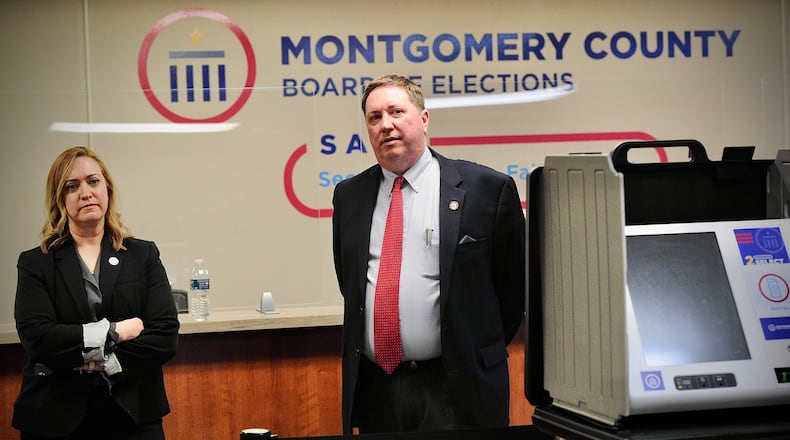“It’s just confusing already,” said Brian Sleeth, director of the Warren County Board of Elections and president of the Ohio Association of Election Officials. “It sounds confusing to the voters.”
The Montgomery County Board of Elections is fielding many questions about when the primary for state legislative races will be and what it is costing taxpayers to have two primaries, said Jeff Rezabek, board director.
“We are getting a lot of calls from people concerned about who is actually on this ballot,” said Chris Corba, executive director of the League of Women Voters of the Greater Dayton Area. “And when the next primary is going to be for legislature. We don’t know yet.”
The Ohio Redistricting Commission failed to produce constitutional state legislative maps on time. Bipartisan rulings by the Ohio Supreme Court found four maps created by the Republican-dominated commission unconstitutionally favored Republicans.
A Congressional redistricting map produced by Republicans also was declared unconstitutional and they replaced it another that remains under challenge in state court.
Here are key facts to know:
- State house of representatives, statesenate and political party state central committee races will not be on the May 3 ballot. They will be on the ballot in a second primary election that is not yet set.
- The May 3 ballot will include statewide races for U.S. Senate and Ohio governor, lieutenant governor, attorney general, treasurer, secretary of state, auditor, supreme court and state district court of appeals, as well as local races, and local issues such as tax levies. Some of those races are competitive, and some of them are unopposed on their party ballot.
- The people running for U.S. House seats will be on the May 3 primary ballot.
- It is unknown what will happen to those House seat election results if the district map is again found to be unconstitutional.
- As is typical in an election, in some counties the ballot may contain names of people who dropped out of the race too late to change the ballot. Polling places will be posted with that information, and votes for those people will not be counted.
For example in Montgomery County judicial races candidates who withdrew but whose names are on the ballot include Democrat Tony Schoen and Republicans Kimberly Melnick and Michele Henne.
Credit: JIM NOELKER
Credit: JIM NOELKER
In Warren County Republican Mike Gilkey of Deerfield Twp. withdrew from the Warren County auditor race and Republican Jenn Giroux dropped out of the 1st Congressional District primary.
In Clark and Miami counties, Democrat Danny O’Connor withdrew from the 15th Congressional District race.
On election night the Ohio Secretary of State will not collect congressional results, as that office has done in the past. Instead, individual counties in those districts will post results just for the voters in that specific county, and then on Wednesday, May 4, the most populous county in each district will post full results from all counties in that district.
Warren and Hamilton counties are working together so that Hamilton will post 1st District results on election night, Sleeth said.
Rezabek said voters need to take care to go to the correct polling place. This year precinct or polling location changes are expected to impact more than 60,000 Montgomery County voters. Rezabek said polling location cards were sent to all voters and poll workers will verify with voters that they are in the right place. If people go to their old location and it is closed or has otherwise changed, there will be notes posted and a QR code people can scan to get to the board website at MCSafeVoting.com to find out where they are supposed to vote.
Rezabek and Corba both said they haven’t fielded a lot of calls from people concerned about election integrity, even as Republican candidates for U.S. Senate and other races continue repeating the baseless falsehood that the 2020 presidential election was stolen from then-President Donald Trump.
Rezabek expected to have a large group of partisan poll observers, and there is a group from Ohio Republican Party that has been in the office observing early voting. But he said Democrats did not file by the deadline to submit names of people who would observe the polls during early voting and on Election Day.
Both he and Corba said Ohio’s elections are safe and secure, and they are confident in the checks and balances, which include having both a Republican and a Democrat handling all board of election procedures.
Follow LynnHulseyDDN on Twitter and Facebook
About the Author



